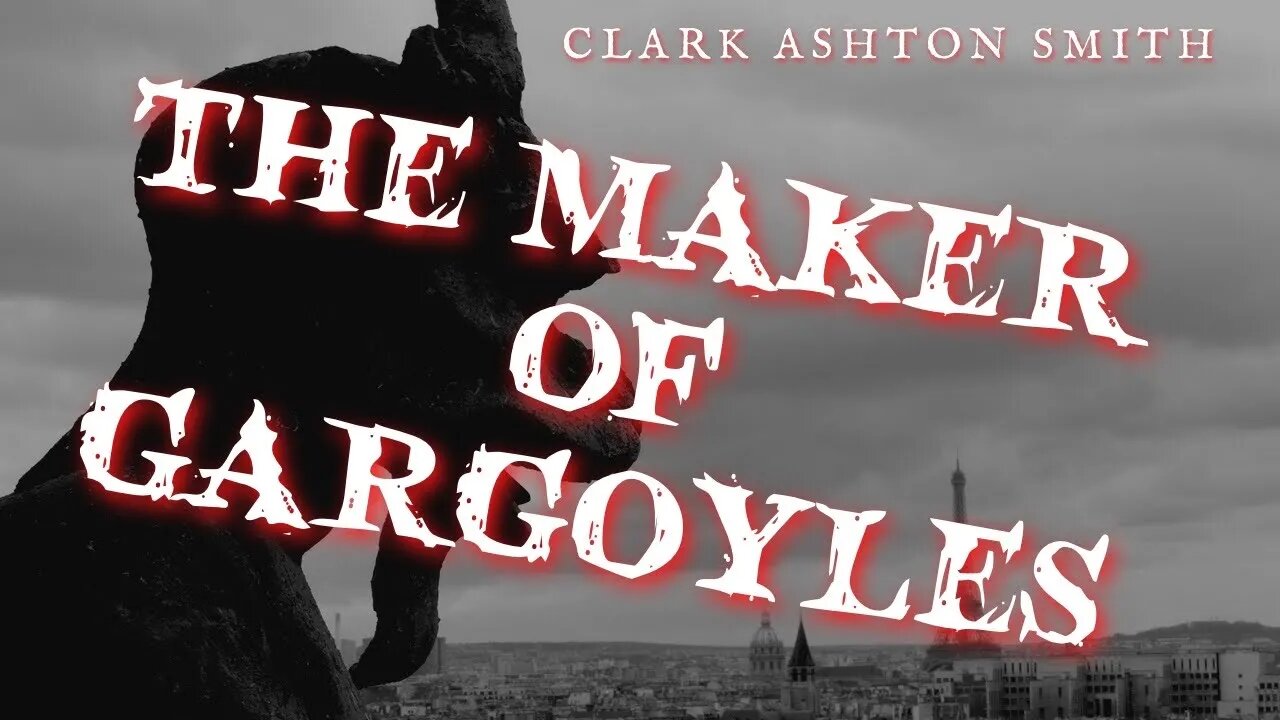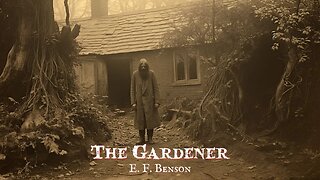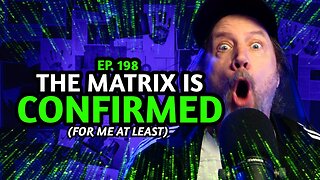Premium Only Content

The Maker of Gargoyles by Clark Ashton Smith
Clark Ashton Smith was born in 1893 in Long Valley, California and died in California in 1961. He began as a poet and wrote decadent, overblown Romantic poetry after the manner of Swinburne. He got early recognition for his work in California.
Lovecraft loved him and with Robert E Howard and Howard Philips Lovecraft he was one of the big three writers of Weird Tales. Ray Bradbury was also a fan. A few months ago, I re-read Bradbury's *Something Wicked This Way Comes* , and I can see that Bradbury too was a lover of poetic, sometimes overblown language-like myself!
Smith was clear that his use of language and rhetorical stylings as deliberate. He talked of trying to create a "sort of verbal black magic."
He uses some obscure words, such as 'vans' for wings and 'ferine' which neither I, nor my spell-checker, had come across before. I must have heard the word before because I read all of these stories as a teenager. But I'd forgotten ferine. Turns out it's a version of feral: savage and untamed.
I did enjoy the word 'troublously' and also 'lubricous'.
Smith wrote poetry from the age of 11, and his first novel by the age of 14. He began to sell his stories aged 17. His influences were The Arabian Nights, and he was clearly entranced by fairy-tale realms. He is also influenced by Edgar Allen Poe and the Brothers Grimm as well as the classic Gothic novel Vathek. Interestingly, he loved the decadent poetry of Charles Baudelaire. He translated his poetry from French as Baudelaire in his turn had translated the works of Poe into French.
He had a period of ill health. He was a correspondent of Lovecraft and also knew Jack London and Ambrose Bierce.
Smith and Lovecraft used the strange names and ideas they conjured in mutually influenced stories. This 'open source' was Lovecraft's greatest gift to horror: he allowed other writers to build on his ideas and so the Cthulhu Mythos was created.
Smith was a massively prolific author, but more or less gave up writing in the second half of his life.
He then turned back to sculpting and painting. He nursed his mother and father during their final illnesses until finally is father died in 1937. Robert H Howard killed himself in 1935 and Lovecraft died of cancer in 1937. It's thought that these events may have knocked the love of writing out of him.
Smith himself had a heart attack in 1953, but he still married aged 61. He set up house with Carolyn Jones Dorman and took on her children, and they moved to Pacific Grove.
He had a series of strokes in 1961, and one finally killed him.
The Maker Of Gargoyles
This is a nice story. I love the setting in the made-up French medieval city of Vyones in the haunted region of Averoigne. Apparently Averoigne is based on the real Auvergne region. Lovecraft used Averoigne in one of his stories 'Out of the Aeons'.
I think Smith illustrates very well the paranoid fear of satanism and the acts of the evil one that must have taken over small towns like this every now and again for hundreds of years. It's a bit like New England and The Crucible in New England or Witchfinder General in old England.
The picture of a population becoming overpowered by paranoid fear about a plague moving in their midst, a fear fanned by authorities, such as the church in this case, is obviously beyond belief.
The central idea of the story that an evil man creates evil works of art; statues that capture his wickedness and lust. It is somewhat reminiscent of The Picture of Dorian Grey, except of course for Reynard in this story, the transference of his evil into the gargoyles appears to have been unconscious and once he recognises his fault in this, he tries to rectify it with a tragic end.
So, he has a bit of a character arc! Also, Nicolette doesn't die. These are both positive things.
It also reminds me of the lost Dr Who story, The Daemons, which I loved as a young boy. In that satanic statues come to life. Very folk horror.
I was also interested in Reynard's sorcerous reputation. He is not a sorcerer, but blacksmiths, another type of craftsman were in older times considered to have magic powers. Then we have the Masons, later the Freemasons who had their own secret and somewhat magical ceremonies. It's something about the craftsman, or woman in that they create things from raw materials and particularly a sculptor who makes things in the shapes of things that might, and in this case do, live.
Join this channel to get access to perks:
https://www.youtube.com/channel/UC9o9Vf0G92Pu2MCgKr73vhQ/join
If you want to support the channel to keep me going, become a Patreon for bonus stories
https://www.patreon.com/barcud
For a one time thank you, you can buy me a coffee
https://ko-fi.com/tonywalker
Music is by The Heartwood Institute https://bit.ly
#Weird tales #Werewolf #audiobook #Short Stories
-
 51:51
51:51
Classic Ghost Stories on Rumble
1 year ago $0.04 earnedThe Gardener by E F Benson #audiobook
567 -
 47:54
47:54
BonginoReport
9 hours agoLesson Learned Over Leaked Group Chat (Ep. 12) - Nightly Scroll - 03/25/25
210K171 -
 1:26:47
1:26:47
Kim Iversen
10 hours agoU.S. Bombs Yemen, D.C. Only Cares About A Leak | UK Journalist Addresses Spy Accusation
173K107 -
 2:02:46
2:02:46
Slightly Offensive
7 hours ago $10.59 earnedSecurity DISASTER: Trump Admin LEAKS Bombing Plans to Atlantic Journo | Nightly Offensive
74.7K18 -
 24:09
24:09
Producer Michael
10 hours agoWE’RE GIVING AWAY LUXURY WATCHES!! (NOT CLICKBAIT)
36.1K11 -
 1:38:21
1:38:21
Redacted News
10 hours agoBREAKING! TRUMP THREATENS EGYPT WITH TWO CHOICES, BIOWEAPONS LABS IN MONTANA EXPOSED, JFK FILES
215K280 -
 1:08:49
1:08:49
vivafrei
17 hours agoNational Security Text Leak? Major Violation or Atlantic Fake News? Bad Trump Pick for CDC? & MORE!
168K52 -
 2:15:00
2:15:00
The Quartering
13 hours agoBOMBS Found At Tesla Dealer, Race HOAX Busted, Loans For Fast Food, Snow White Debacle & More!
310K364 -
 34:10
34:10
Jamie Kennedy
6 hours agoCoincidence DOES NOT Exist - Matrix Shattering Moments | Ep. 198- Hate To Break It To Ya
33.2K15 -
 1:12:05
1:12:05
Edge of Wonder
7 hours agoPyramid of Giza’s Mystery Hidden Beneath: Massive Structures Shatter Our History
44K10